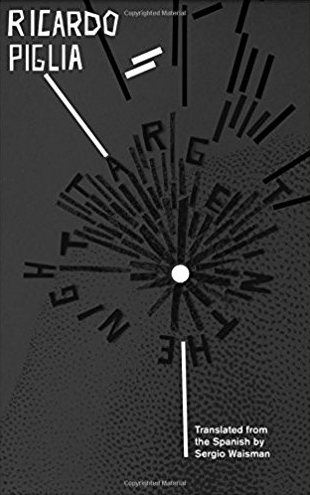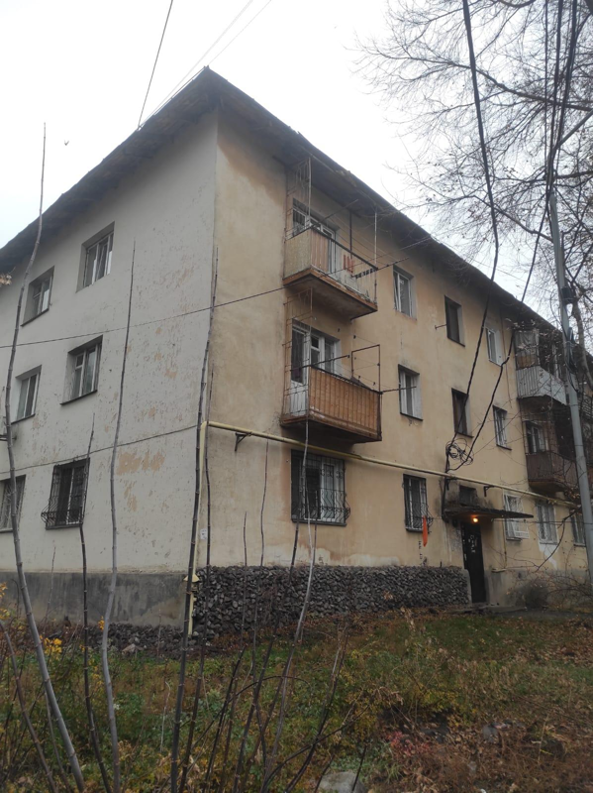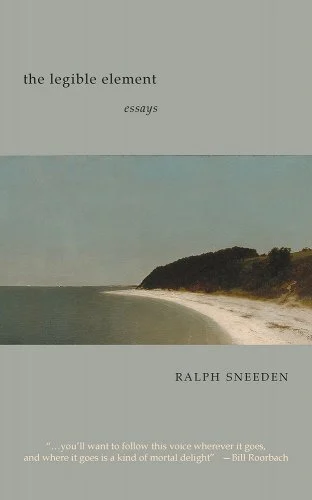
The year is 1972. Tony Durán, a Puerto Rican-born adventurer and professional gambler from New Jersey, is found dead in his hotel room soon after arriving in a small town in Buenos Aires Province with a leather bag full of dollars. Dark-skinned, he spoke Spanish with a Caribbean accent. Rumors of his ménage à trois with Ada and Sofía Belladona, twin daughters of a prominent local landowner, have scandalized the town. Inspector Croce investigates.
So begins Argentine writer Ricardo Piglia’s fourth novel, Target in the Night, as detective fiction. Who killed Tony Durán and why? A gambling plot, the love triangle? Could one of the Belladona sisters have soured on the tripartite arrangement? My next guess: Racism? Durán is “a mulatto who shows up in a place where the last black people had disappeared—or dispersed until they blended completely into the landscape—fifty years earlier.”
Inspector Croce’s investigation turns, for a moment, to the hotel’s Japanese night porter Yoshio Dazai. Effeminate, likely homosexual, attracted to Durán: a stereotypical villain of crime fiction of a much earlier era, Yoshio couldn’t possibly carry the plot in this contemporary novel, could he? Yoshio fed Durán information about the town and its inhabitants. The Belladona sisters have a reclusive father and two brothers, one of whom is recently deceased. The two brothers had started an automobile factory, which was recently mortgaged and is in danger of being taken over by a hostile party that wishes to replace it with a shopping mall.
As Croce interrogates Yoshio, we are led deeper inside the complex interrelationships and hierarchies of the town. Durán, it appears, had clandestine business dealings with Old Man Belladona, the twins’ father. Croce wants to continue to unravel the threads of this crime, but the public prosecutor Cueto is in a hurry. Yoshio has admitted to being in love with Durán and was seen entering his room on the night of the murder. To Croce, the murder doesn’t appear to be a crime of passion; Still Cueto takes Yoshio into custody.
The narrative seems to take Croce’s view of the events, implicitly placing the inspector above suspicion, but as we read on, the narrator turns out to be someone with a larger perspective: Emilio Renzi, a Buenos Aires journalist who arrives to cover the murder. He’s the one who believes Croce “was always right and always remained impartial.” He points a finger at Croce’s nemesis, the public prosecutor Cueto. Like Croce, Renzi believes that Cueto’s arrest of Yoshio is wrong. This development concludes the first part of the novel. But who really killed Durán and why?
To Piglia aficionados, Renzi is an expected figure, the author’s alter-ego. Piglia, whose full name is Ricardo Emilio Piglia Renzi, was born in 1941 in Buenos Aires Province, where he went on to become a journalist, editor, and publisher of international crime fiction. After two very well-received collections of short stories, he emerged as a major force in Argentine literature in 1981 with the publication of his first novel, Artificial Respiration. Structured as a detective novel, Artificial Respiration opens with Emilio Renzi searching for a lost uncle. Though The Dirty War was on its last legs, the military junta still ruled the land, and information about the disappeared—many of them members of the leftist revolutionary groups—hushed up. Artificial Respiration, which described the repressive regime and traced its genealogy, was hailed as an act of personal courage on the part of its author. Translated into English in 1994, it established the author’s reputation in the United States. Emilio Renzi has since narrated a host of short stories and novels, and three volumes of Piglia’s diaries are forthcoming in Spanish under the title The Diaries of Emilio Renzi.
To help readers navigate the historical context of Target in the Night, the year before Juan Perón’s return as Argentina’s president, his death, and the onset of The Dirty War, Piglia provides footnotes, from which we learn that, according to the 1969 census, there were 23,185 Japanese in Argentina and that malls—“major enclosed commercial centers”—originated in 1956 near Minneapolis. The mall that would be built in place of the Belladona brothers’ factory would be the first of its kind in Argentina.
An important footnote in the second part of the book tells us:
“In 1914, half of the Argentine extension—the five provinces of the wet pampas—was occupied by gigantic estancias in the hands of very few owners. And nothing has changed since then. According to the latest estimates from the National Agricultural Census, in 1969: 124 million hectares, with 59.6% of the total land in the hands of 1,260 owners (2.5% of the total population).”
This dryly offered information hints at a major twist in the narrative, a loosening of the detective plot and its opening into a conversation about the workings of power and greed in the global arena. Renzi meets Old Man Belladona, an engineer by profession, whose father came to this part of Argentina with the construction of the railroad, and who sees the encroaching large business interests as the end of an era. “There are no values left, only prices,” the Old Man Belladona says. “The State is an insatiable predator . . . there are two economies at play, a double bottom with an underground where money circulates.”
To help his surviving son, Luca, the Old Man had withdrawn the money he’d held in a U.S. bank account. Tony Durán, his delivery man, was murdered, not by Yoshio Dazai, but by an agent of Cueto’s—according to the evidence gathered by inspector Croce. The facts of the case, however, are beside the point. Yoshio stands accused, and the court is in session. The cash in Durán’s bag becomes a hostage to the proceedings, which Cueto has engineered to serve his corrupt purposes. If Yoshio is guilty, the money will be released from evidence, and Luca Belladonna, the factory owner, can pay his creditors and save his factory. Luca must provide the pivotal testimony. If he lies, Yoshio goes to prison. If Luca acknowledges Yoshio’s innocence, the money remains evidence in the case and inaccessible. The factory will perish and become a mall.
The second part of the novel comes to rest on the question, what kind of man is Luca Belladona? He has poured his life into building the factory; continuing with single-minded passion after the business climate turned against him, and everyone, including his brother, abandoned him. In the words of his assistant, he is “enlightened by his illusions of reaching meaning through his works.” Will he now abandon his life’s meaning for a socially marginalized man wholly unrelated to him, sacrificing not only his own work, but allowing large business interests to take over and transform the town his ancestors had built?
Piglia writes from a future vantage point unavailable to Luca Belladona: globalization has turned out to be an unstoppable force; the dilemma that Luca faced, a sham.Target in the Night is as much a historical novel as it is a detective novel; the author uses genre as a convenient package from which to break into a conversation about pressing matters of today. The tale of a hard-boiled detective, able to conclusively solve a murder and see that the guilty party is punished belongs to the past. Inspector Croce suspects that Cueto ordered Durán’s murder, but lacks the political power to pursue his superior.
Who killed Tony Durán and why? In the course of the novel, the question becomes incidental. Crime and punishment have been outsourced to business interests—local or international—and an innocent man’s life hangs in the balance. Luca’s judgement will determine the fate, not only of his factory, but his community.
Target in the Night won the 2011 Rómulo Gallegos International Prize, awarded every two years for the best novel in the Spanish language (previous winners included Elena Poniatowska, Roberto Bolaño, and Gabriel Garcia Marquez). It arrives to us from Deep Vellum Publishing, which recently brought out an ambitious, gender-bending work by Oulipo writer Anne Garréta. Sergio Waisman’s translation shows off the wide range of modes and voices that merge to comprise this narrative, from the quasi-academic footnotes to salt-of-the-earth aphorisms from Inspector Croce to Renzi’s lyrical passages of descriptions of life of a small pampas town. Readers familiar with Latin American fiction will enjoy Piglia’s playful references to Borges, Rodolfo Walsh, Roberto Arlt.
Olga Zilberbourg’s fiction has appeared in and is forthcoming from Feminist Studies,Epiphany, Narrative Magazine, Hobart, B O D Y, Santa Monica Review, J Journal, and other print and online publications.



